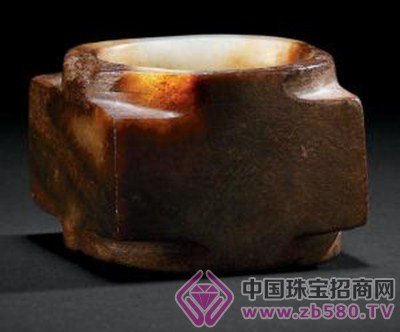
"ç®" is a kind of utensil used to sacrifice, first appeared in "Zhou Li". The jade in the Liangzhu culture, the outer circle of the inner circle, the round hole in the middle symbolizes the passage of the heavens and the earth. Whenever the harvest season or the sacrifice ceremony, the jade will be used to communicate with the gods of heaven and earth.
Sacrificial ritual
Yuxi is one of the six important rituals in ancient times. It is used as a ritual for the sacrifice of the earth. It is also a necessary tool for the wizards to use to pass the gods. The shape of the outer circle symbolizes the image of "the sky is like the sky. "The ground", often burned red jade to suppress evil spirits and expel ghosts.
Symbolic power
The mausoleum is large in scale, and the main position of the tomb is full of jade burial. The more noble the tomb is, the more the burial will be, in order to show its privileged status. It is possible to prove the identity of the tomb owner with the burial of the jade. Generally, the upper class such as the tribal chieftain and the high priest can be buried with jade, which also represents a system of Liangzhu culture.
Liangzhu Culture
Yuxi first appeared in the third culture of Xuejiagang in Qianshan, Anhui Province. It has been 5100 years ago. In the middle and late Neolithic period, the Liangzhu culture of Jiangsu and Zhejiang, the Shixia culture of Guangdong, and the Taosi culture of Shanxi have appeared in large numbers. Among them, the Liangzhu culture is the most famous, and the number of unearthed is also the most.
The jade of Liangzhu culture is mostly tremolite jade. The cyan color is mostly yellow. It is made into a regular inner circle and square shape. The size of the body is different. They are engraved with animal face patterns and are divided into four groups. The same pattern is engraved on the plaque, and the sacred beasts unearthed in Hangzhou are the largest jade in Liangzhu culture.
Unique in each direction
The jade plaques in the Shang and Zhou Dynasties are generally short, plain and without ornamentation, neatly cut, large round holes, and thin body. Two pieces of jade with ornamentation and four-cornered concave ridges, which are unearthed, are very rare. During the Spring and Autumn Period, the body is small, engraved with animal face lines or hook clouds. After the two Song Dynasty, there appeared antique jade. In the Ming and Qing Dynasties, the pseudo-ancient jade imitation Shang and Zhou dwarfs were more numerous. The number of pseudo-ancient jade in the Qing Emperor Qianlong period was especially large, but due to different processing techniques, counterfeit products can still be seen. Its unnatural place, the overall appearance is smooth and there is no ancient atmosphere, it is difficult to be realistic.
Oxford Printed Fabric,T/C Oxford Fabric,Cotton Feeling Strong Fabric,Cotton Polyester Blend Fabric
SHAOXING CITY CHENYAO TEXTILE CO,LTD , https://www.chenyaotextile.com